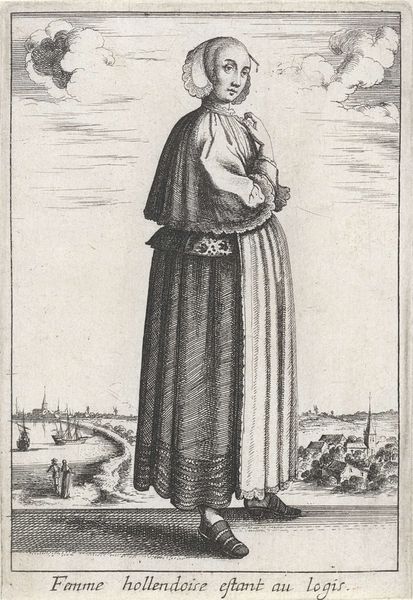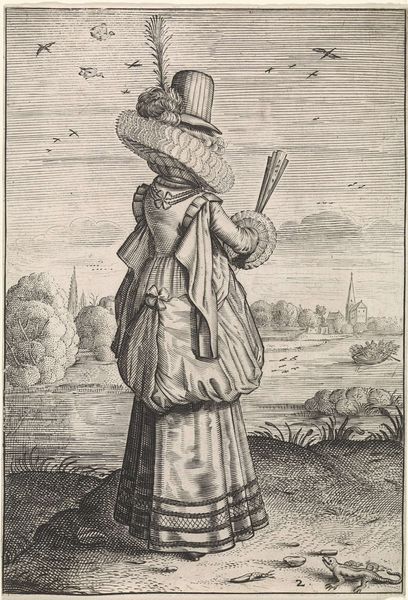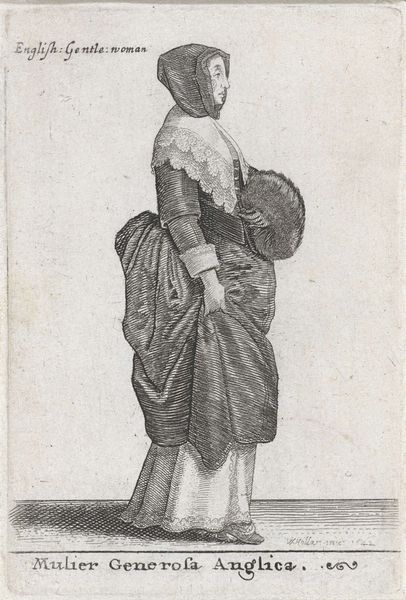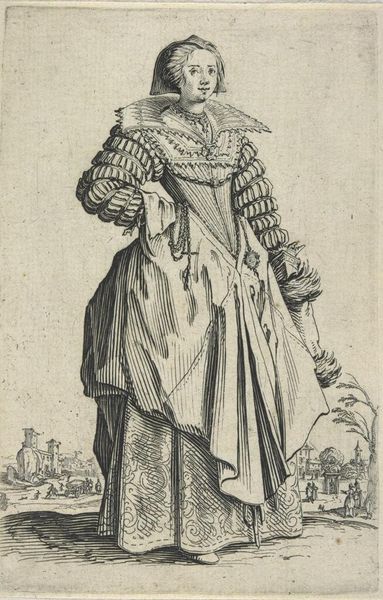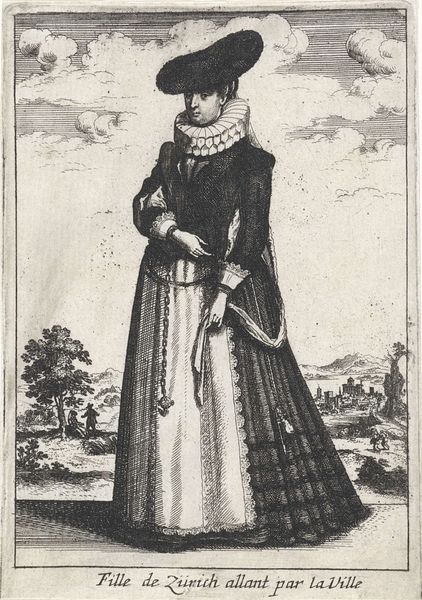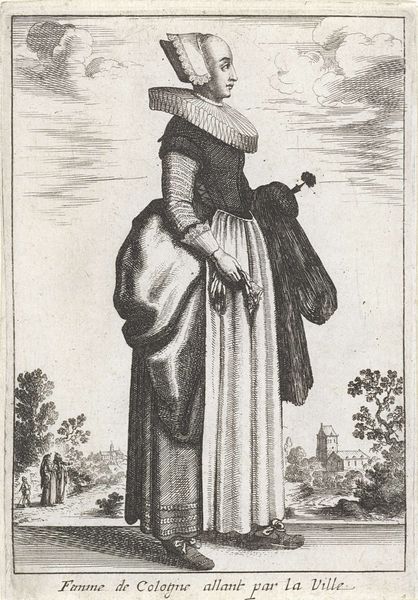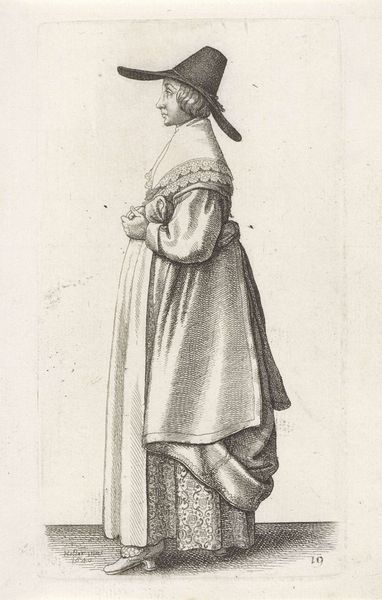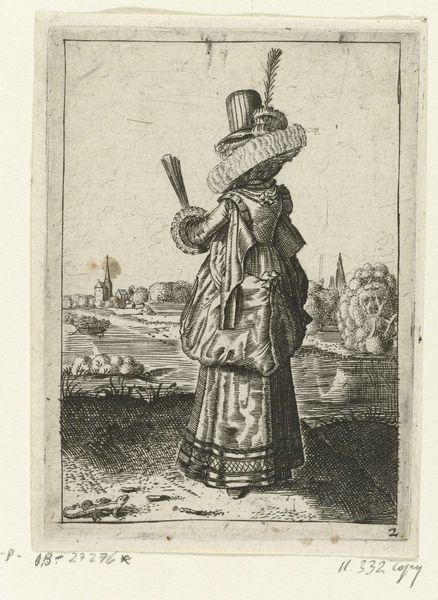
print, engraving
#
portrait
#
baroque
# print
#
pencil sketch
#
old engraving style
#
figuration
#
line
#
cityscape
#
genre-painting
#
engraving
Dimensions: height 137 mm, width 95 mm
Copyright: Rijks Museum: Open Domain
Editor: This is "Femme Angloise allant par la Ville," from 1662. It’s an engraving of an English woman walking in a city, currently held in the Rijksmuseum. It's fascinating how the artist used lines to create such detail, and I am curious about the woman's almost haughty posture. How do you interpret this work through its formal qualities? Curator: It's through those very lines that we find entry. Consider how they define the volumes of her dress, creating a rich interplay of light and shadow. Note, too, the contrast between the tight, almost obsessive hatching used for her draped garment versus the relatively sparse treatment of the sky and distant buildings. Editor: I hadn’t thought about the density of the lines creating volume like that. What effect does this contrast achieve? Curator: It emphasizes a hierarchy of form, with the woman placed as the subject against a softer background. Further observe the strategic use of the single viewpoint. She occupies almost the entire frame. Editor: It really directs the eye. Are there other details that speak to the emphasis of the female figure? Curator: Indeed. The subtle details – the wisps of hair, the delicate fan she holds, even the texture implied in the folds of her skirt – contribute to a formal reading of status. Now, what might the positioning of the woman relative to the landscape convey? Editor: Hmm, the rigid line of her figure contrasts with the organic forms of the landscape. Perhaps a subtle commentary on civilization versus nature? Curator: Precisely. These opposing forces create a dynamism. I trust we now recognize how critical examination reveals complexity through considered interplay of formal elements. Editor: Absolutely, I hadn't fully considered the power of line and texture in conveying meaning here. Thanks for that enlightening analysis.
Comments
No comments
Be the first to comment and join the conversation on the ultimate creative platform.
